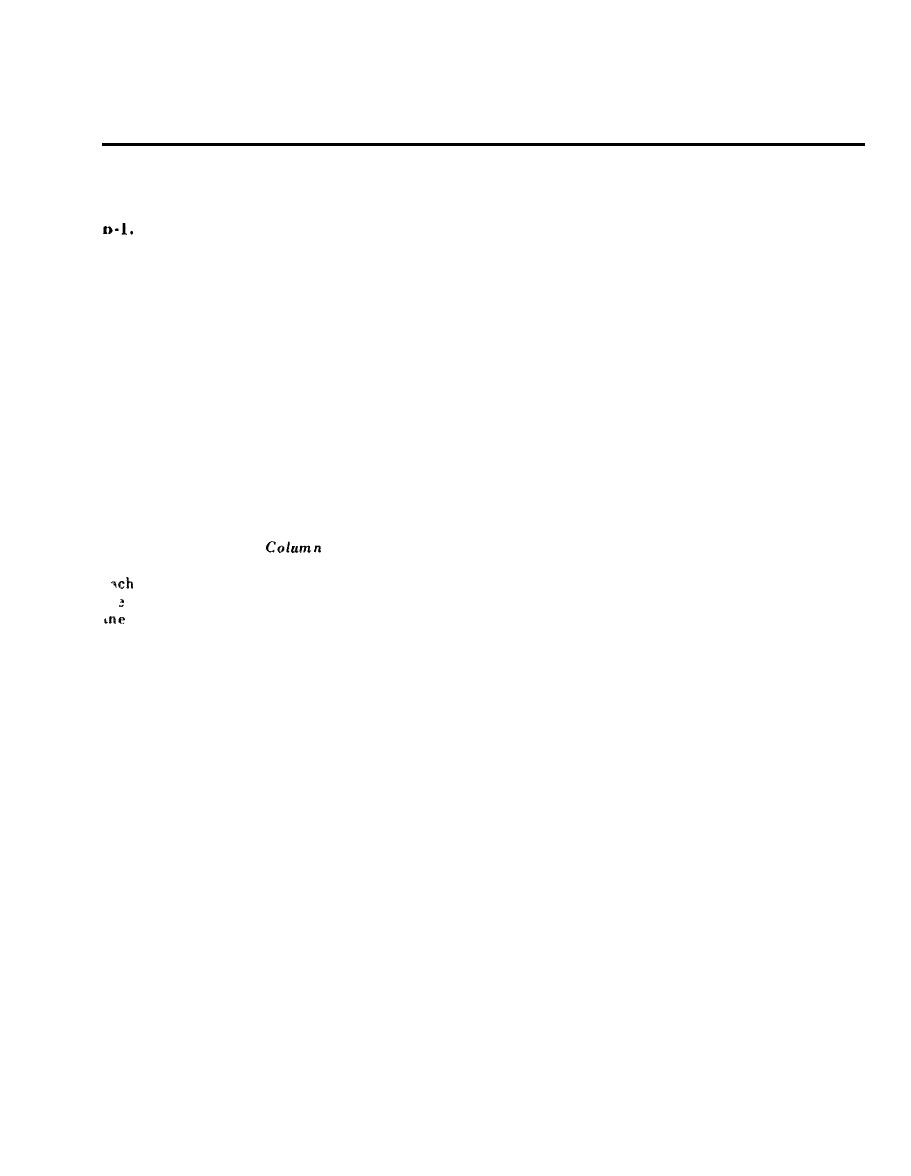
APPENDIX B
M A I N T E N A N C E ALLOCATION CHART
Section I. INTRODUCTION
E-ALIGN: To adjust specified variable elements of an
General
item to bring to optimum performance.
a. This section provides a general explanation of
F-CALIBRATE: To determine the corrections to be
all maintenance and repair functions authorized at
made in the readings of instruments or test eqnipment
various maintenance levels.
used in precise m e a s u r e m e n t . Consists of the
comparison of two instruments, one of which is a
b. Section II designates overall responsibility for
certified standard of known accuracy, to detect and
the performance of maintenance functions on the
adjust any discrepancy in the accuracy of the
identified end item o r c o m p o n e n t . T h e i m -
instrument being compared with the certified standard.
plementation of the maintenance functions upon
G - I N S T A L L : TO set up for use in an operational
environent such as an emplacement, site, or vehicle.
t h e end item or component will be consistent with
H-REPLACE: To replace unserviceable items with
the assigned maintenance functions.
serviceable like items.
c. S e c t i o n I I I l i s t s t h e s p e c i a l t o o l s a n d t e s t
I-REPAIR: Those maintenance operations necessary to
equipment required for each maintenance function
restore an item to serviceable condition through
as referenced from section II.
correction of material damage or a specific failure.
R e p a i r may be accomplished at each level of
d. S e c t i o n I V c o n t a i n s s u p p l e m e n t a l i n s t r u c t i o n s
maintenance.
or explanatory notes required for a particular
J-OVERHAUL: Normally, the highest degree of
maintenance function.
maintenance performed by the Army in order to
minimize time work is in process consistent with quality
B-2. Explanation of Columns in Section II
a n d economy of operation. It consists of that
a. Group Number,
(1). T h e a s s e m b l y
maintenance necessary to restore an item to completely
group number is a numerical group assigned to
serviceable condition as prescribed by maintenance
assembly. The assembly groups are listed on
standards in technical publications for each item of
equipment. Overhaul normally does not return an item
MAC in disassembly sequence beginning with
to like new, zero mileage, or zero hour condition.
first assembly removed in a top down
K - R E B U I L D : The highest degree of materiel
disassembly sequence.
maintenance. It consists of restoring equipment as
b. Assembly Group. Column (2). This column
nearly as possible to new condition in accordance with
contains a brief description of the components of
original manufacturing standards. Rebuild is per-
each assembly group.
formed only when required by operational c o n -
siderations or other paramount factors and then only at
c. Maintenance Functions, Column (3). T h i s
the depot maintenance level. Rebuild reduces to zero
column lists the various maintenance functions (A
the hours or miles the equipment, or component
through K). The upper case letter placed in the
thereof, has been in use.
appropriate column indicates the lowest main-
d. Tools and Equipment, Column (4). T h i s
t e n a n c e level authorized to perform these functions.
column is provided for referencing by code the
The symbol designations for the various main-
s p e c i a l tools and test equipment (sec. III), required
tenance levels are as follows:
to perform the maintenance functions (sec. II).
C-Operator or crew
e. Remarks, Column (5). This column is
O-Organizational maintenance
p r o v i d e d for referencing by code the remarks (sec.
F-Direct support maintenance
H-General support maintenance
IV) pertinent to the maintenance functions.
D-Depot maintenance
B-3. Explanation of Columns in Section III
T h e maintenance functions are defined as follows:
a. Reference Code. This column consists of a
number and a letter separated by a dash. The
A-INSPECT: To determine serviceability of an item by
number references the T&TE requirements listed
comparing its physical, mechanical, and electrical
in section 11. The letter represents the specific
characteristics with established standards.
B-TEST: To verify serviceability and to detect electrical
m a i n t e n a n c e function the item is to be used with in
or mechanical failure by use of test equipment.
columns A through K of section II.
C-SERVICE: To clean, to preserve, to charge, and to add
b. Maintenance Level. This column shows the
fuel, lubricants, cooling agents, and air.
lowest level of maintenance authorized to use the
D-ADJUST: To rectify to the extent necessary to bring
special tool or test equipment.
into proper operating range.

